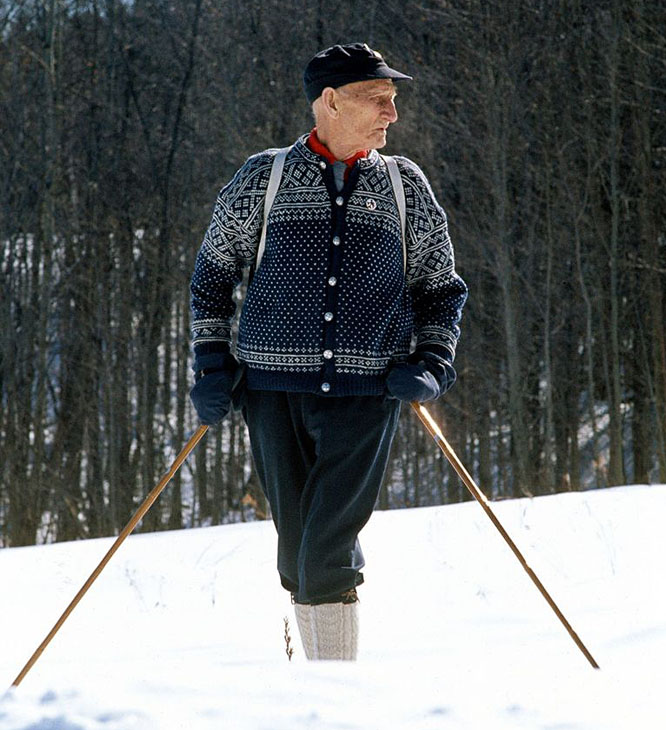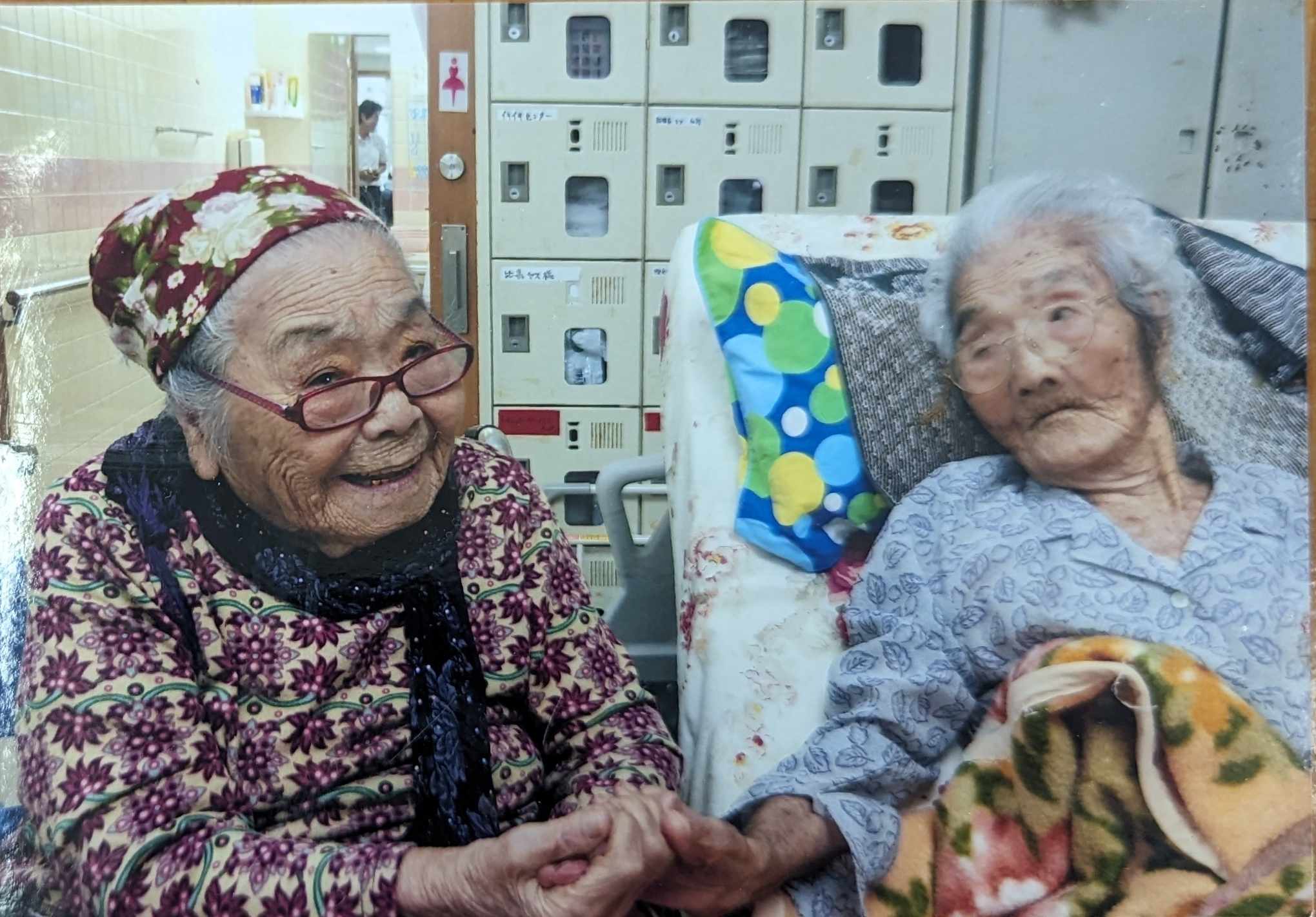In my years of researching supercentenarian claims I have personally documented over 3,000 supercentenarians, many of whom I have also collected newspaper articles of in order to help validate their ages. What strikes me is that there are so many different aspects of their lives that supercentenarians attribute their longevity to. One of the most common things to observe when reading about supercentenarians is that they have several family members that lived exceptionally long lives themselves. There are examples of both mother-daughter supercentenarians (e.g., Mary Phil Cota & Rosabell Fenstermaker) and sibling supercentenarians (e.g., Kame Ganeko and Kikue Taira) as well as other combinations, which would hint that there is a genetic component to longevity. But is this the only factor? Do all supercentenarians have long-lived relatives? Can there be other reasons as to why some individuals live long?
What does the research say?
According to Passarino et al. (2016) human longevity is a result of both genetic and non-genetic factors. Sibling research has indicated that both siblings and children of long-lived individuals live longer than those of people with average lifespans (Schoenmaker et al., 2006). Family recontruction in an Italian study revealed the same thing, both parents and siblings of long-lived individuals do live longer (Montesanto et al., 2011). Longevity can therefore likely be attributed to genetics, which can be controlled by eliminating other factors that may affect lifespan, such as the environment. Some candidate genes have been proposed, such as APOE and FOXO3 (Eline Slagboom et al., 2018; Lindahl-Jacobsen & Christensen, 2019). This longevity advantage with lower mortality among siblings of centenarians, does, according to some research, however seem to disappear the older the individual becomes and vanishing by age 100 (Gavrilova & Gavrilov, 2022).
Still, while genetics do play a great part in allowing a person to become exceptionally old, common trends that cannot be solely attributed to genes have been noted among centenarians and supercentenarians. Resilience, the ability to adapt positively to adversity, is widely noted among centenarians (Zeng & Shen, 2010). What this means is that when these individuals lose loved ones or face other hardships they will react with a wide array of coping strategies and be able to not let these losses and adversities affect their lives negatively, rather finding ways to move forward. In the same vein, spirituality and the ability to make sense of their long lives has been found to be a crucial factor for support among centenarians (Manning et al., 2012).
But what else? Diet is commonly explained to be the key factor for longevity. Alleged (but disputed) supercentenarian Bernardo LaPallo partially attributed his longevity to eating a diet with fruits and vegetables, nutrients that have been observed in studies to benefit health in general (Probst et al., 2017). Actual supercentenarians have also been noted to attribute their longevity to their diet, although these diets often become secondary in news reports in favor of “less healthy” alternatives, such as smoking and whisky (Henry Allingham) or bacon (Gertrude Baines). A common diet that is often associated with longevity is the Mediterranean diet, a diet with a low quantity of saturated fats and plenty of greens (Vasto et al., 2012).
Still, while green is good, another common trend that I have observed when studying supercentenarians is their ability to remain engaged in their surroundings but also that they don’t let their advancing ages limit them. The theory of selective optimization with compensation (SOC) suggests that for an individual to enjoy a healthy aging they have to be able to adapt to their changing bodies and abilities (Baltes & Baltes, 1990). Still, some centenarians are noted to be able to enjoy physical health longer than their non-centenarian peers (Herbert et al., 2022).
One thing that often fascinates many longevity enthusiasts is the fact that some supercentenarians are able to continue living independently until extremely advanced ages and be able to move about without issue. Jeanne Calment, for example, lived on her own until shortly before her 110th birthday (and also smoked for close to a century!). While no supercentenarian has so far been observed to partake in a race of some kind, some have come close. Polish supercentenarian Stanislaw Kowalski ran the 100 meters in the M105 category and had some plans to race as a supercentenarian, which didn’t come to fruition. Norwegian man Herman Smith-Johannsen, famous for introducing cross-country skiing in North America, would still go skiing and kayaking even as a centenarian. Further, several supercentenarians have credited their longevity to hard work and keeping themselves occupied. Some research does imply that centenarians that lead active lifestyles do score better in mental status scores, which could imply that engagement is beneficial for retained functioning (Martin et al., 2010).

Herman Smith-Johannsen (1875-1987) remained physically active even as an advanced centenarian. Source: Office national du film du Canada
So, what have we learned?
Exceptional longevity is likely not influenced by only genetics, if a person wants to live long, they will have to put some effort into living a healthy life. Engagement and lifestyle are crucial for both social and psychological well-being, both of which are common in centenarians and likely supercentenarians too. Remaining physically active and eating a diet rich in nutrients will further help a person live longer. There is still a long way to go for understanding human longevity, what we have now are good guesses, but the key for unlocking the full picture concerning the quest for longevity is still out there.
References
Baltes, P., & Baltes, M. (1990). Psychological perspectives on successful aging: The model of selective optimization with compensation. In Baltes, P., & Baltes, M. (Eds.), Successful aging: Perspectives from the behavioral sciences (1–34). Cambridge, UK: Cambridge University Press. https://doi.org/10.1017/CBO9780511665684.003
Eline Slagboom, P., van den Berg, N., & Deelen, J. (2018). Phenome and genome based studies into human ageing and longevity: An overview. Biochimica et biophysica acta. Molecular basis of disease, 1864(9 Pt A), 2742–2751. https://doi.org/10.1016/j.bbadis.2017.09.017
Gavrilova, N. S., & Gavrilov, L. A. (2022). Protective Effects of Familial Longevity Decrease With Age and Become Negligible for Centenarians. The journals of gerontology. Series A, Biological sciences and medical sciences, 77(4), 736–743. https://doi.org/10.1093/gerona/glab380
Herbert, C., House, M., Dietzman, R., Climstein, M., Furness, J., & Kemp-Smith, K. (2022). Blue Zones: Centenarian Modes of Physical Activity: A Scoping Review. Population Ageing. https://doi.org/10.1007/s12062-022-09396-0
Lindahl-Jacobsen R, Christensen K. (.2019). Gene–lifestyle interactions in longevity. In: Fernández-Ballesteros, R., Benetos, A., Robine, J. (Eds.). The Cambridge Handbook of Successful Aging. Cambridge University Press, 91–109. https://doi.org/10.1017/9781316677018.9781316677008
Manning, L. K., Leek, J. A., & Radina, M. E. (2012). Making Sense of Extreme Longevity: Explorations Into the Spiritual Lives of Centenarians. Journal of religion, spirituality & aging, 24(4), 345–359. https://doi.org/10.1080/15528030.2012.706737
Martin, P., Baenziger, J., Macdonald, M., Siegler, I. C., & Poon, L. W. (2009). Engaged Lifestyle, Personality, and Mental Status Among Centenarians. Journal of adult development, 16(4), 199–208. https://doi.org/10.1007/s10804-009-9066-y
Montesanto, A., Latorre, V., Giordano, M., Martino, C., Domma, F., & Passarino, G. (2011). The genetic component of human longevity: analysis of the survival advantage of parents and siblings of Italian nonagenarians. European journal of human genetics: EJHG, 19(8), 882–886. https://doi.org/10.1038/ejhg.2011.40
Passarino, G., De Rango, F., & Montesanto, A. (2016). Human longevity: Genetics or Lifestyle? It takes two to tango. Immunity & ageing: I & A, 13, 12. https://doi.org/10.1186/s12979-016-0066-z
Probst, Y. C., Guan, V. X., & Kent, K. (2017). Dietary phytochemical intake from foods and health outcomes: a systematic review protocol and preliminary scoping. BMJ open, 7(2), e013337. https://doi.org/10.1136/bmjopen-2016-013337
Schoenmaker, M., de Craen, A. J., de Meijer, P. H., Beekman, M., Blauw, G. J., Slagboom, P. E., & Westendorp, R. G. (2006). Evidence of genetic enrichment for exceptional survival using a family approach: the Leiden Longevity Study. European journal of human genetics: EJHG, 14(1), 79–84. https://doi.org/10.1038/sj.ejhg.5201508
Vasto, S., Rizzo, C., & Caruso, C. (2012). Centenarians and diet: what they eat in the Western part of Sicily. Immunity & ageing: I & A, 9(1), 10. https://doi.org/10.1186/1742-4933-9-10
Zeng, Y., & Shen, K. (2010). Resilience significantly contributes to exceptional longevity. Current gerontology and geriatrics research, 2010, 525693. https://doi.org/10.1155/2010/525693

